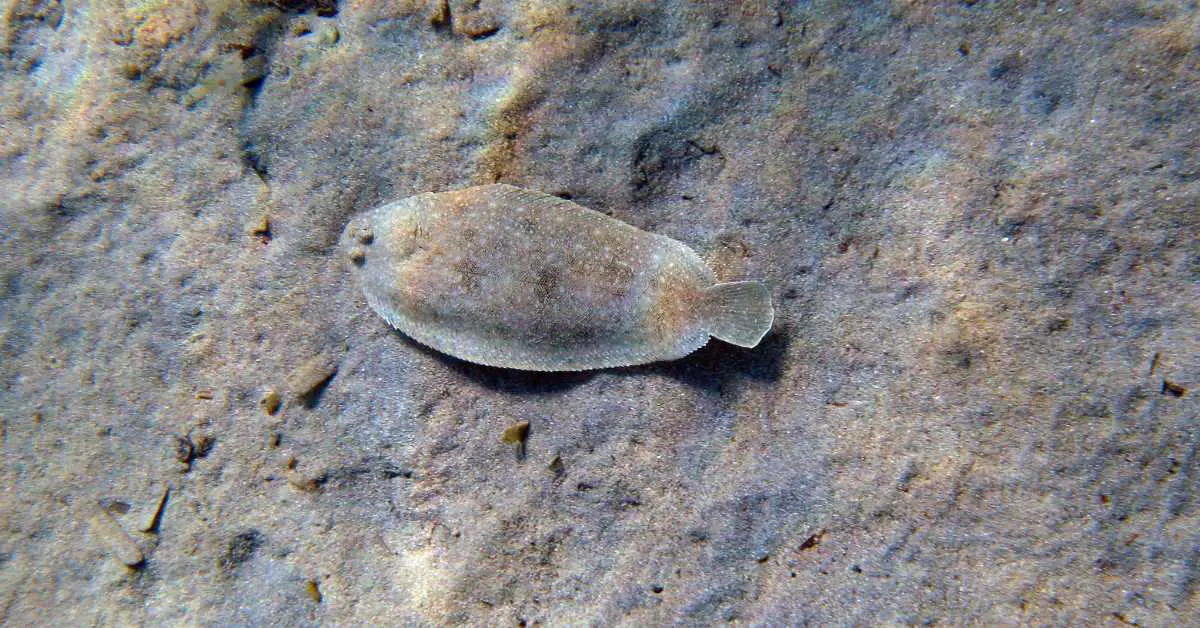Have you ever wondered, “What’s the difference between flounder and sole?” These two kinds of fish might look very similar when you first see them at the grocery store or on a restaurant menu. Both are flat and have bodies that look kind of alike. But guess what? They’re actually different kinds of fish! Let’s explore more about these two species of fish.
Key Takeaways
- Flounder and sole, while similar-looking flatfish, are different species, with variations in their taste, shape, and the sides their eyes migrate to as they grow.
- These two types of fish are found in different regions, with flounder common in the Atlantic and Pacific oceans, and sole more common in the Eastern Atlantic and the West Coast of the United States.
- Both flounder and sole are delicious and healthy seafood choices, rich in nutrients, and can be enjoyed in a variety of dishes.
Flounder vs Sole
Flounder
Flounder is a group of flatfish species found predominantly in the United States, particularly along the east coast, and the North Carolina waters. The Atlantic flounder is well-known, but you can also find Grey sole and Summer flounder, among others. The meat of a flounder has a semisweet taste and a light, flaky texture.
Sole
Sole is a term often used to describe a variety of flatfish species, including the Petrale sole and Lemon sole. The most prestigious among them is the Dover sole, particularly popular in the United Kingdom and Eastern Atlantic. The taste of sole is subtle and delicate, loved by many seafood enthusiasts.
Similarities
Despite their differences, sole and flounder have several things in common. Both have adopted a similar evolutionary strategy for survival: they spend most of their life lying on the bottom of the ocean to protect themselves from predators. This behavior is facilitated by their unique morphologies, characterized by flat bodies and eyes facing upward.
Taxonomic Distinctions
Order and Families
Flounders and sole belong to the order Pleuronectiformes, an informal grouping of flatfish families. Flounder typically refers to members of families like Pleuronectidae, Paralichthyidae, and Bothidae. In contrast, true sole fish come from the family Soleidae.
Diversity
There are many species within these families. The term ‘flounder’ can represent species like the Witch flounder and Yellowtail flounder, while ‘sole’ may refer to the Dover sole or Grey sole.
Likeness
Sometimes, the terms flounder and sole are used interchangeably in the seafood industry, creating confusion. They are different, though, not just in their taxonomic grouping but also in taste, texture, and the waters they inhabit.
Shape and Side
The shapes of sole and flounder fish set them apart. Some flounder species have an almost round shape, like the Winter flounder, while others, such as the Yellowtail flounder, have a more arrowhead-shaped body. On the other hand, the majority of sole species, like the Dover sole, have a more elongated body shape.
The side of the body that the eyes migrate to as they grow also distinguishes these fish groups. Most flounder species are right-eyed, meaning their eyes migrate to the right side of their body. However, there’s variation between species, with some being left-eyed. In contrast, Dover sole, a popular sole species, is a left-eyed flatfish.
Habitat and Distribution
- Flounder: Flounders are usually found in the Atlantic and Pacific oceans, often in the coastal waters of the United States.
- Sole: Sole, particularly Dover sole, is more common in the Eastern Atlantic, around the UK, and on the West Coast of the United States.
- Shared Habitats: Certain areas, such as the Pacific Northwest, are home to both flounder and sole species.
Seasonality and Availability
Flounder and sole availability fluctuate throughout the year. For flounder, peak months usually include November, December, and January. Sole, particularly Dover sole, is more abundant from February to April.
Flounder
In the United States, Winter flounder is a popular catch off the east coast, particularly in North Carolina. You’ll find it most plentiful from December through February.
Sole
Dover sole, often found in the Eastern Atlantic, is most abundant from February to April. Petrale sole, from the Pacific, is best caught in the winter and early spring.
Shared Season
For those on the west coast, October and November are the best months to find both flounder and sole at the fish markets. It’s a seafood lover’s delight during this season!
➡️You may also be interested in this recent article, “What Does Grouper Taste Like?”
Culinary Options
Flounder and sole fillets are highly prized in the culinary world due to their light and delicate taste. Both fish types lend themselves well to various cooking methods, including baking, grilling, and frying.
Flounder, with its slightly sweeter flavor profile, is excellent in a range of dishes. From a simple pan-seared flounder with lemon to a more complex flounder stuffed with crabmeat, the options are many.
➡️Be sure to check out this delicious Fried Flounder Sandwich recipe.
Different Cuisines
Sole fish, particularly Dover sole, is popular in classic French cuisine. One famous dish is “Sole Meuniere,” a simple dish where the fish is lightly floured, pan-fried in butter, and served with a brown butter sauce, parsley, and lemon.
Whether it’s a simple family dinner or a fancy feast, both flounder and sole can elevate your meal to another level.
Nutritional Profiles
In addition to their culinary uses, both flounder and sole are healthy choices, packed with lean protein, vitamins, and minerals. They’re also low in fat and calories, making them ideal for those who are conscious about their diet.
The nutrient profiles of these two types of fish are quite similar. Both are excellent sources of Vitamin D and B12, essential for bone health and neurological function, respectively.
Fishing Techniques
Flounder
Fishing for flounder is a popular pastime, especially along the east coast of the United States. A common method is “flounder gigging,” where fishermen use a long pole with a spear on the end to catch the fish. This method is typically done at night, using lights to attract the flounder.
Sole
Sole fishing, particularly for Dover sole, is most commonly done using bottom trawls. These nets are dragged along the sea floor, catching the flatfish where they dwell. This method is prevalent in the North Sea, where Dover sole is abundant.
Responsible Fishing
When buying seafood like flounder and sole, it’s essential to consider sustainability. Overfishing is a significant concern for many fish species, so it’s crucial to support fisheries that use responsible and sustainable practices.
Buying Guide
When buying flounder or sole, there are a few things to consider to ensure you’re getting the best quality fish. The fillets should be firm to the touch, with a fresh, mild scent. If it smells overly fishy, it’s probably not fresh.
The color of the flesh should also be taken into account. Both flounder and sole should have a white or off-white flesh color, indicating freshness.
Don’t be afraid to ask your local fishmonger questions. Find out where and when the fish was caught. Remember, fish caught in their peak season will usually taste better and be more plentiful, meaning lower prices for you.
For those living in places where fresh fish isn’t readily available, consider buying frozen. Many companies now flash freeze fish at the peak of freshness, preserving the taste and texture.
Recipes Ideas
- Flounder: Try a simple flounder fillet pan-seared in a lemon-butter sauce, or go for a flounder stuffed with crabmeat for a more decadent meal.
- Sole: You could go classic with a Sole Meuniere, or try something different like a stuffed Dover sole with a lemon-caper sauce.
- Both: Many recipes can use either fish. A seafood pasta, a light fish soup, or fish and chips could be made with flounder or sole.
Wrap Up
Whether you prefer flounder or sole, there’s no denying that both have a lot to offer. From their unique biology to their place in global cuisines, these fish species have intrigued seafood lovers and marine biologists alike.
By understanding their differences and similarities, we can appreciate each of these flatfish for what they are – culinary delicacies, fascinating species, and crucial parts of the marine ecosystem.
Conclusion
In the end, the “Flounder vs Sole | What’s The Difference?” question is not about which is better, but rather understanding their unique characteristics. Both have their places in the culinary world and are vital parts of our marine ecosystems.
Remember to respect these beautiful creatures. Practice sustainable fishing, and ensure that we can continue enjoying the delightful taste of flounder and sole for generations to come.

Claudia Faucher is a fitness trainer and lifestyle blogger, who recently started to pursue her other passions… Southern cooking and creating recipes.







